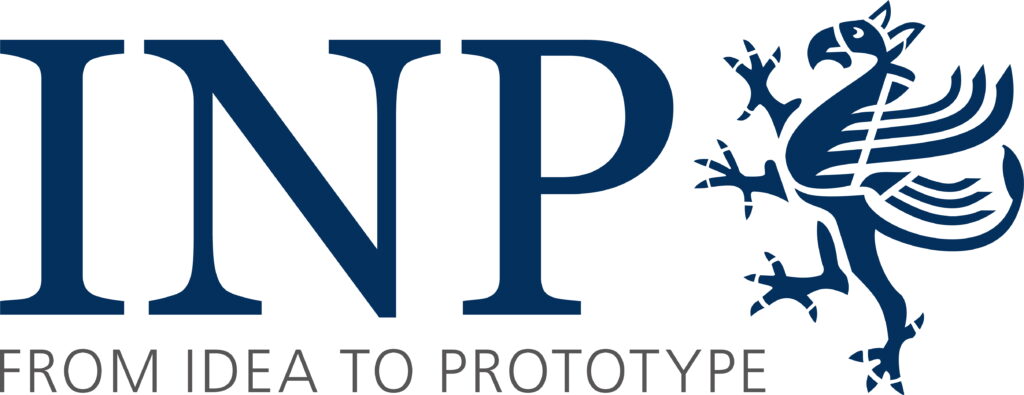AVF recently caught up with Prof. Jürgen Kolb, Programme Manager Agriculture, Bioeconomy, Environment at Leibniz Institute for Plasma Science and Technology (INP) to learn more about his current Research Program.
INP – Who We Are
The Leibniz Institute for Plasma Science and Technology (INP), based in Greifswald, Germany, is Europe’s largest non-university research institute dedicated to the investigation of low-temperature plasmas and their possible applications for societal and industrially relevant problems. As a member of the Leibniz Association, the INP conducts application-oriented basic research and translates scientific findings into practical solutions – from idea to prototype.
What is your technology, and who is it for?
Our developments and technologies address a wide range of applications from surface treatments, material processing, energy security, biotechnologies, to medical applications. The Research Program Agriculture, Bioeconomy, Environment is dedicated to novel methods for food production, environmental protection and agricultural practices. Our developments offer advantages for the cultivation in Vertical Farming systems, maintaining plant health, improving growth, and conserving resources. Especially cold atmospheric plasma (CAP) that is generated from air and water at atmospheric pressure without additional chemicals is of interest:
- Exposures to reactive oxygen and nitrogen species (RONS) that aretemporarily provided by plasma processed air (PPA) are highly effective for the decontamination of seeds but also with respect to system hygiene in general and even for a stimulation of metabolic processes, e.g. to improve germination.
- When interacting or operating with water, the plasma processed water (PPW) is likewise enriched with reactive species, which reduce microbial contaminations and offer a possibility for the recirculation of nutrient solutions, especially in hydroponic systems. The irrigation with PPW can assist plant health and promote growth processes and even promote stress resistance. Accordingly, PPW is currently also tested for conventional cultivation as an alternative to pesticides and for priming against drought stress.
- Simultaneously PPW can be enriched with longer lasting nitrogen-compounds, such as nitrate, which are then available for nitrogen fertilization without the need of additional admixtures of synthetic fertilizers.
The plasma technologies can be tailored and optimized towards specific needs of controlled indoor farming systems. Our developments, therefore, target in particular:
- Designers, developers and builders of vertical farming systems
- Operators and enterprises of indoor agricultures
- Seed producers and plant breeders (not exclusively for vertical farming)
- Academic and industry partners for further development
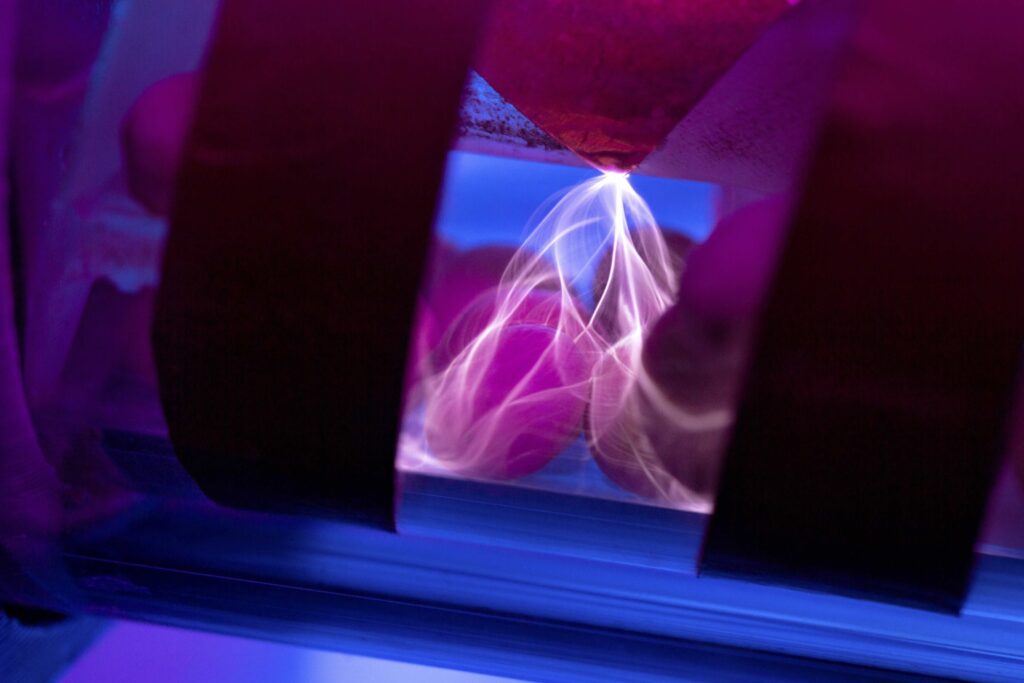
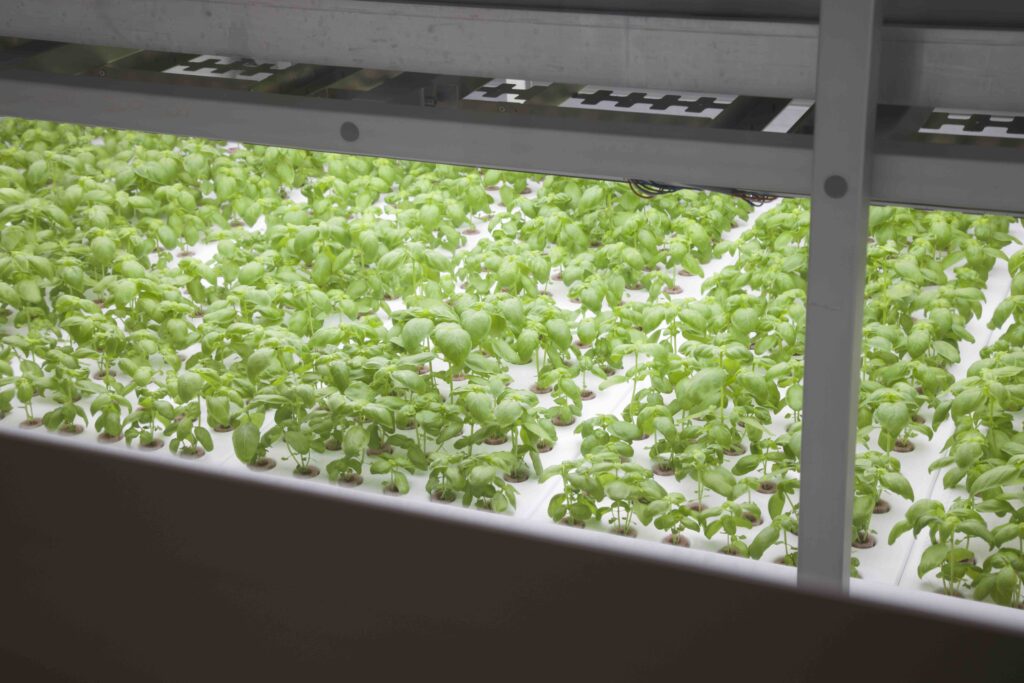
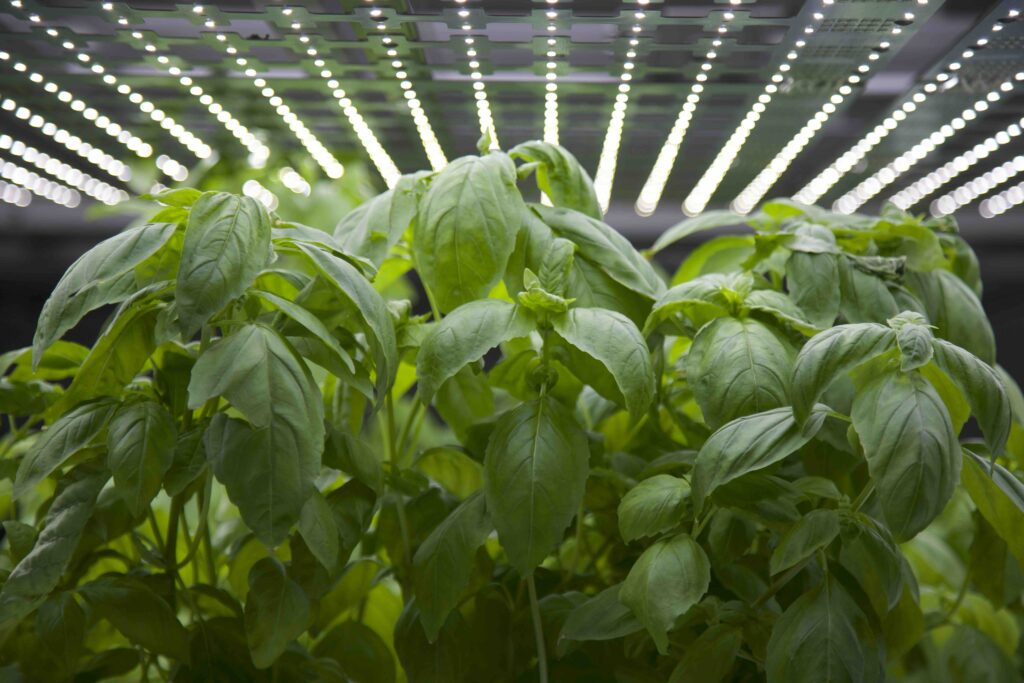
What is unique about your product and approach?
- Plasma is a versatile and inherently clean technology:
Plasma can be applied at various stages of the agricultural value chain: seed treatment, plant growth, water quality and recovery, and post-harvest hygiene. No additional chemicals are needed and except for nitrogen compounds, all produced reactive species decay in minutes or days. - Scalable, flexible, and integrable:
Depending only on electrical power, methods and processes can be adapted to different needs and integrated in existing systems with and without a combination with other methods. - Development according to industry standards:
The INP develops applications on industrially relevant scales and in consideration of respective constraints. For vertical farming a commercial scale system has been established to test plasma technologies in a production relevant setting, enabling rapid validation and market-oriented development. - End-to-end transfer:
INP supports the entire innovation process from fundamental understanding to industrial prototypes with partners from industry, application, agricultural sciences and with respect to technological constraints as well as legal requirements and regulations.
What is the potential of your technology going forward?
- Healthier, more resilient crop production:
Plasma improves germination, reduces plant pathogens, and strengthens plant growth, which is of particular value in densely packed vertical farming environments. - Resource-efficient production:
Plasma encourages the recirculation of nutrient solutions associated with a lowered fresh water demand and, accordingly, reduced overall environmental impact. - Sustainable crop management:
Plasma enables the reduction or replacement of agrochemicals, contributing to residue-free and low-emission plant cultivation. - Commercial readiness:
Technologies are already transferred into pilot-scale systems, paving the way for more wide-spread and faster adaption.
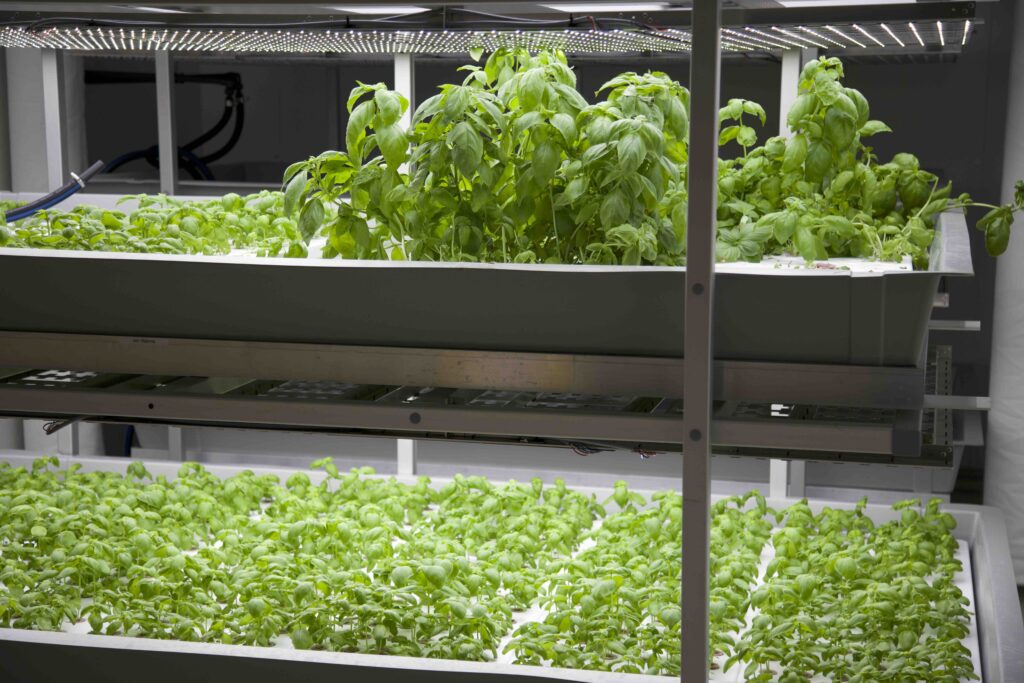
What are your goals in the future?
- Continue development and validation of plasma technologies for systems of controlled environment agriculture, establishing different use-cases and further exploring possibilities.
- Expand collaborations with vertical farming system developers and operators to better adapt plasma technologies to specific needs (e.g. crops) and cultivation conditions.
- Provide a valuable contribution to vertical farming systems for a sustainable, regional food production especially in structurally weak or climate-challenged regions also outside Europe.
- Leverage knowledge gained on farming in controlled settings for the possible use in other farming strategies, including conventional agricultural practice under the “physics for food“ umbrella brand.
What are you looking for in the VF space – what kind of collaborators?
INP is looking to collaborate with:
- Vertical farm operators and system developers to implement and test plasma methods in practice.
- Technology integrators to support automation, control, and hardware adaptation.
- Agricultural scientists and breeders to study the plant-specific effects of plasma treatment.
- Regulatory partners for approval and product certification.
- Investors and commercial partners to transfer prototypes into market-ready solutions.
You can read more about Prof Kolb’s research here.
All images courtesy of Anne Przybyla, INP
